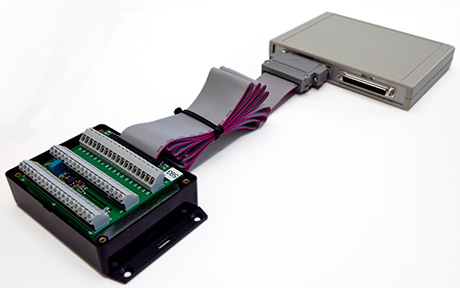How Accurate are your Temperature Measurements?
Thermocouples are commonly used to monitor temperature, but how accurate are the results?
Absolute Accuracy
There are many factors that limit the accuracy of the final figure for the temperature. Absolute Accuracy relates to how closely the thermocouple derived temperature mimics the actual temperature. The major errors usually arise from the thermocouple materials themselves.
There are international standards that specify the amount by which sensors may deviate from ideal behaviour, reproduced below.
Accuracy and Temperature Range of different types of Thermocouple and RTD
| Temp. °C | B type | E type | J type | K type | N type | R type | S type | T type | PRTD |
|---|---|---|---|---|---|---|---|---|---|
| -200 | - | - | - | 3.0 | 3.0 | - | - | 3.0 | 0.55 |
| -100 | - | - | - | 2.5 | 2.5 | - | - | 1.5 | 0.35 |
| 0 | - | 1.7 | 1.5 | 1.5 | 1.5 | 1.0 | 1.0 | 0.5 | 0.15 |
| 200 | - | 1.7 | 1.5 | 1.5 | 1.5 | 1.0 | 1.0 | 0.8 | 0.55 |
| 400 | - | 2.0 | 1.6 | 1.6 | 1.6 | 1.0 | 1.0 | - | 0.95 |
| 600 | 1.5 | 3.0 | 2.4 | 2.4 | 2.4 | 1.0 | 1.0 | - | 1.35 |
| 800 | 2.0 | 4.0 | - | 3.2 | 3.2 | 1.0 | 1.0 | - | 4.30 |
| 1000 | 2.5 | - | - | 4.0 | 4.0 | 1.0 | 1.0 | - | - |
| 1200 | 3.0 | - | - | 9.0 | 9.0 | 1.3 | 1.3 | - | - |
| 1400 | 3.5 | - | - | - | - | 1.9 | 1.9 | - | - |
| 1600 | 4.0 | - | - | - | - | 2.5 | 2.5 | - | - |
Typically thermocouples are accurate to 1-2 degrees Celsius. As thermocouples age their chemical and electro properties change, reducing their accuracy. This effect is quicker in harsh environments and when you regularly heat and cool the thermocouple to the limits of its range.
Relative Accuracy
Relative Accuracy relates to measurement of changes in temperature, which is often the real purpose of thermocouples. Here the effect of noise can be very important. This happens when the thermocouple leads act as aerials picking up environmental electrical activity. A lot of this is common to both signal wires and a differential amplifier will remove a lot of common mode voltage.
Differences between the signal wires (for example if they are separated rather than twisted together) will lead to residual voltages being added to the signal, increasing noise.
Keeping the signal wires as short as possible, and as far away from electrical machinery as possible, will help. It's good practice to place the data acquisition units as close to the thermocouples as possible. Distributed systems using, for example, RS485, Ethernet or Modbus networks allow you to do this.
External Isothermal Box with Cold Junction Measurement
Thermocouple measurements depends on knowing the temperature of one of the junctions. Housing this junction externally in an isothermal box with a cold junction sensor will minimise junction errors and increase accuracy compared to having the reference junction inside the data logger.

Isothermal box connected to a Microlink 851-TC data logger
More Information
- Temperature Measurement with Thermocouples and RTDs
- Thermocouple and voltage data logger with digital I/O and counting
- 7 Ways to reduce noise
Or contact us for more information on measuring temperatures with thermocouples.